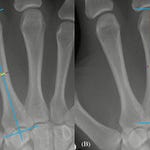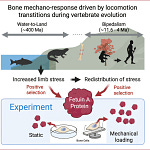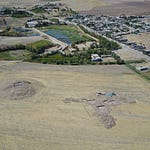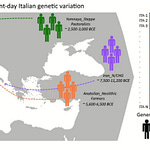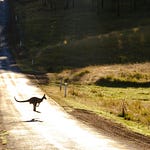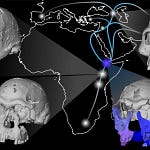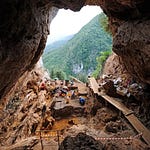Somewhere high in the Andean highlands, over 9,000 years ago, a young woman was laid to rest1 with the tools of her trade: stone projectile points, scrapers, and bone-processing implements. Her burial was not an anomaly. It was a statement. And it’s forcing archaeologists to reconsider long-held beliefs about gender and labor in early human societies.
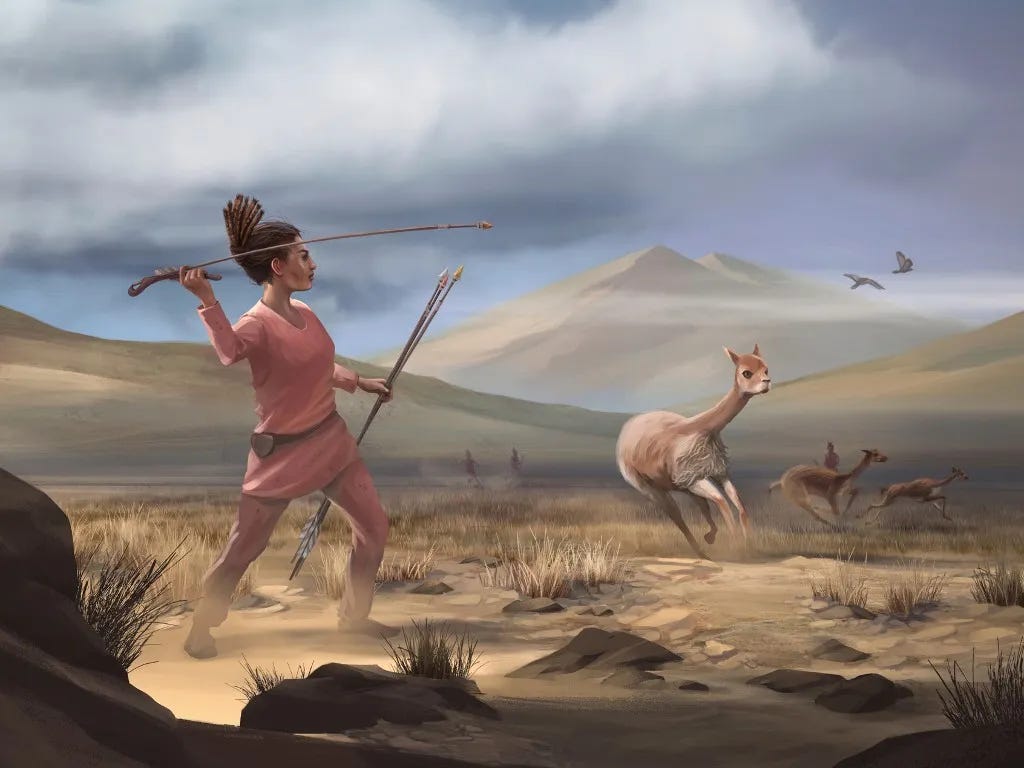
The grave was unearthed at Wilamaya Patjxa, a site more than 3,900 meters above sea level in southern Peru. The burial, designated WMP6, contained the remains of a 17-to-19-year-old woman. She was interred with a toolkit that included six finely crafted projectile points, a possible knife, ochre nodules, and tools for scraping hides. Taken together, these objects suggest that she was not simply buried with prestige goods. She was buried with the implements of her daily work: hunting large animals.
"The objects that accompany people in death tend to be those that accompanied them in life," the authors of the study note, pushing back on assumptions that female burials with hunting tools must reflect symbolic rather than practical roles.
The evidence from WMP6 is not alone. In their review of 107 sites across the Americas dating to the Late Pleistocene and Early Holocene, the researchers identified 27 individuals buried with big-game hunting tools. Of those, 11 were female. That level of participation, they argue, suggests that early big-game hunting was not a male-exclusive activity. Statistical models based on this data estimate that women may have comprised 30 to 50 percent of big-game hunters during this period.
"The empirically observed counts are highly unlikely to have come from a population in which average female participation in big-game hunting was less than 30%," the authors write.
Toolkits and Technologies: What the Burials Reveal
The burial of WMP6 included a remarkably complete toolkit. Projectile points—likely for use with an atlatl or spear-thrower—suggested active participation in dispatching large animals. End scrapers and choppers point to butchery and hide preparation. Cobbles stained with red ochre indicate hide tanning activities. The clustering and preservation of these tools suggest they were buried as an integrated set, perhaps wrapped in a leather pouch.
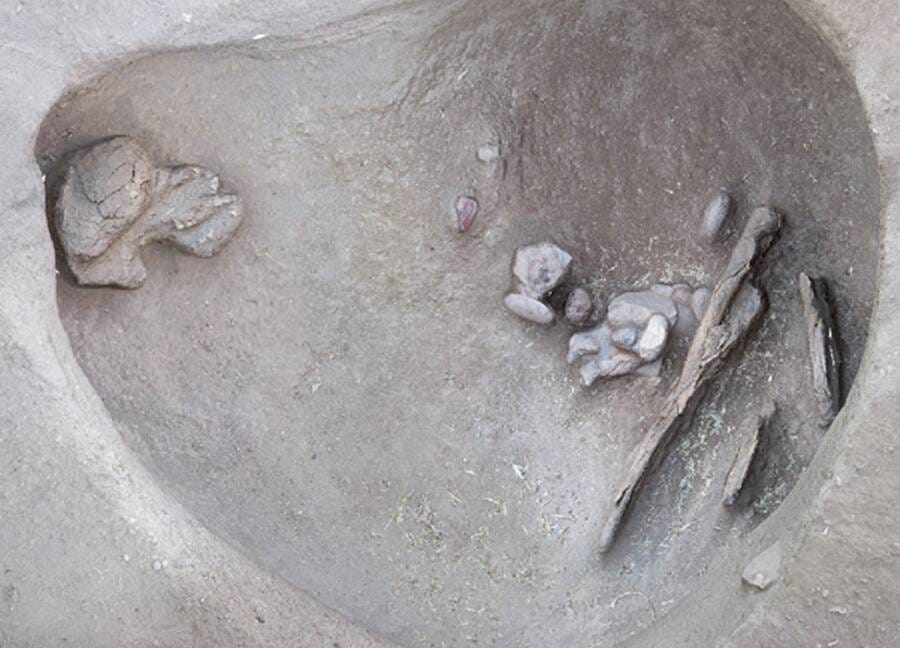
The technology matters. The atlatl, compared to later bows and arrows, required less upper body strength and could be mastered at a younger age. That means the hunting tools buried with WMP6 were consistent with an inclusive hunting practice, one that didn’t exclude women based on physical constraints.
This distinction may help explain why gender roles in more recent hunter-gatherer societies, which often relied on bow and arrow technologies, were more sharply divided. The shift in tools may have contributed to a cultural shift in who did the hunting.
Not an Anomaly
Skepticism around female hunters in prehistory has a long pedigree. In many earlier interpretations, tools found in female burials were dismissed as symbolic or misidentified as domestic rather than hunting implements. But WMP6 and the other 10 female-associated hunting burials from across the Americas challenge that narrative. The weight of the evidence suggests these women were not exceptions to the rule—they were part of it.
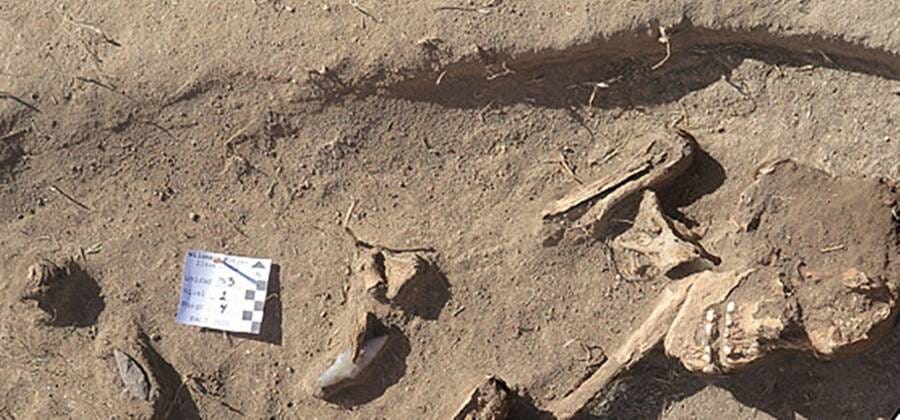
The implication is that early human societies in the Americas were more flexible, more fluid in their division of labor than many contemporary analogs suggest. Communal hunting and alloparenting (shared child-rearing) likely allowed individuals—including women—to participate fully in subsistence activities like hunting.
The Broader Evolutionary Picture
Understanding gender roles in prehistoric societies is not just about correcting old assumptions. It’s about tracing the evolution of human cooperation, labor, and culture. If women hunted big game in the early Americas, that speaks to a social world that was organized differently from many that came after it.
Recent archaeological research, including that at Wilamaya Patjxa, helps reframe the way we think about the past. Rather than simply project modern gender binaries backward in time, it demands we look at the evidence—and ask harder questions about how labor, identity, and technology shaped one another in human evolution.
Related Research:
Geller, P. L. (2017). The Bioarchaeology of Socio-Sexual Lives. Springer International Publishing. https://doi.org/10.1007/978-3-319-56194-0
Estioko-Griffin, A., & Griffin, P. B. (1981). Woman the Gatherer. Yale University Press.
Dyble, M., Salali, G. D., Chaudhary, N., et al. (2015). Sex equality can explain the unique social structure of hunter-gatherer bands. Science, 348(6236), 796–798. https://doi.org/10.1126/science.aaa5139
Hedenstierna-Jonson, C., et al. (2017). A female Viking warrior confirmed by genomics. American Journal of Physical Anthropology, 164(4), 853–860. https://doi.org/10.1002/ajpa.23308
Haas, R., Watson, J., Buonasera, T., Southon, J., Chen, J. C., Noe, S., Smith, K., Llave, C. V., Eerkens, J., & Parker, G. (2020). Female hunters of the early Americas. Science Advances, 6(45), eabd0310. https://doi.org/10.1126/sciadv.abd0310


